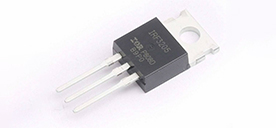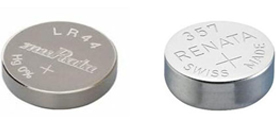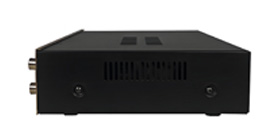OFDM analysis: in-depth analysis of the basic principles of multi-carrier modulation
2023/11/20 9:59:14
Views:
In today's electronics field, the achievement of seamless interface integration is regarded as a top priority. At the heart of this field, interfaces - filters - actively play a vital role and constitute one of the interface filters important subset. In this article, we take a closer look at the integral role active filters play in optimizing interface performance.
Understand the role of active filters in interface integration
Active filters are electronic components that belong to the category of interface filters. Their main goal is to filter and condition electrical signals in the interface. Their basic task is to eliminate unwanted noise\harmonics or interference while protecting the required signal Integrity. This critical function ensures that electronic systems meet the stringent requirements and standards required for modern applications.
Key Characteristics of Active Filters
Active filters have several key characteristics that make them irreplaceable in the pursuit of optimized interface performance:
1. Customizable frequency response: Active filters offer exceptional flexibility, allowing precise tuning to provide a specific frequency response. Engineers can match them precisely to the exact requirements of the interface.
2. Minimize noise and distortion: These filters excel at maintaining signal quality, ensuring the output signal faithfully reflects the input by effectively minimizing noise and distortion.
3. Amplification capability: Active filters are not limited to signal filtering, they can also amplify the signal when needed. This feature is very valuable when the signal level needs to be increased for optimal interface operation.
Application of active filters in improving interface performance
Active filters have a wide range of applications in enhancing interface performance:
- Audio system: Active filters shape the frequency response of audio equipment such as speakers, headphones and microphones, ensuring precise and clear sound reproduction.
- Telecommunications: In the field of telecommunications, active filters play a key role in eliminating unnecessary noise and interference in data and voice signals, ensuring smooth and reliable communication.
- Sensor interface: Active filters play a key role in sensor signal conditioning, removing noise and ensuring accurate measurements. This is crucial in applications such as environmental monitoring and industrial automation.
- Medical equipment: As an important component of medical equipment (such as ECG monitors and MRI machines), active filters efficiently filter noise to ensure accurate patient data.
Design Considerations and Challenges
Designing active filters to optimize interface performance requires a careful approach. Engineers must thoughtfully consider factors such as filter type\order and component selection. At the same time, challenges such as power consumption and space constraints must also be addressed to ensure that the filter performs well at the interface. Practicality and effectiveness in.
Summary
Overall, active filters play a vital role in optimizing interface performance in modern electronics. Their ability to customize frequency response\minimize noise and distortion and amplify signals makes them ideal for implementation in a variety of applications An indispensable component for optimal interface performance. As engineers and designers continue to realize the potential of active filters, they provide the impetus for the electronics field to meet the evolving needs of interface optimization. Active filters, as interfaces Subsets of filters are undoubtedly an important force in driving the seamless operation of our connected world.
Understand the role of active filters in interface integration
Active filters are electronic components that belong to the category of interface filters. Their main goal is to filter and condition electrical signals in the interface. Their basic task is to eliminate unwanted noise\harmonics or interference while protecting the required signal Integrity. This critical function ensures that electronic systems meet the stringent requirements and standards required for modern applications.
Key Characteristics of Active Filters
Active filters have several key characteristics that make them irreplaceable in the pursuit of optimized interface performance:
1. Customizable frequency response: Active filters offer exceptional flexibility, allowing precise tuning to provide a specific frequency response. Engineers can match them precisely to the exact requirements of the interface.
2. Minimize noise and distortion: These filters excel at maintaining signal quality, ensuring the output signal faithfully reflects the input by effectively minimizing noise and distortion.
3. Amplification capability: Active filters are not limited to signal filtering, they can also amplify the signal when needed. This feature is very valuable when the signal level needs to be increased for optimal interface operation.
Application of active filters in improving interface performance
Active filters have a wide range of applications in enhancing interface performance:
- Audio system: Active filters shape the frequency response of audio equipment such as speakers, headphones and microphones, ensuring precise and clear sound reproduction.
- Telecommunications: In the field of telecommunications, active filters play a key role in eliminating unnecessary noise and interference in data and voice signals, ensuring smooth and reliable communication.
- Sensor interface: Active filters play a key role in sensor signal conditioning, removing noise and ensuring accurate measurements. This is crucial in applications such as environmental monitoring and industrial automation.
- Medical equipment: As an important component of medical equipment (such as ECG monitors and MRI machines), active filters efficiently filter noise to ensure accurate patient data.
Design Considerations and Challenges
Designing active filters to optimize interface performance requires a careful approach. Engineers must thoughtfully consider factors such as filter type\order and component selection. At the same time, challenges such as power consumption and space constraints must also be addressed to ensure that the filter performs well at the interface. Practicality and effectiveness in.
Summary
Overall, active filters play a vital role in optimizing interface performance in modern electronics. Their ability to customize frequency response\minimize noise and distortion and amplify signals makes them ideal for implementation in a variety of applications An indispensable component for optimal interface performance. As engineers and designers continue to realize the potential of active filters, they provide the impetus for the electronics field to meet the evolving needs of interface optimization. Active filters, as interfaces Subsets of filters are undoubtedly an important force in driving the seamless operation of our connected world.
Related Information
-
-
Phone
+86 135 3401 3447 -
Whatsapp





